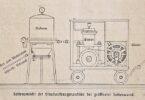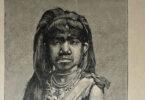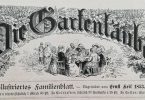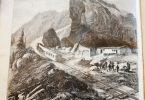
Javier Albarrán has a doctorate in medieval history from the Autonomous University of Madrid (2020), specializing in the history of al-Andalus. His research has focused on issues such as religious minorities in al-Andalus, intercultural contacts, war ideology, the jihad, or the memory of al-Andalus. He has published numerous research articles and a total of three books, notably one on the “Christians of al-Andalus” (2013) and another on the “Islamic Response to the Crusades” (2017). He currently works at the University of Hamburg as a research fellow at the DFG Center for Advanced Study „Roman Islam – Center for Comparative Empire and Transcultural Studies“, where he is conducting research on the history of the Islamization of North Africa and al-Andalus. His fourth book, „Jihad and Memory in al-Andalus“, is also on its way to publication by the University of Granada’s publishing house.
Through this article we are going to delve into a historical epoch that most of us know superficially, Al-Andalus. Many of us have seen on televisión, or had the opportunity to travel to Spain and visit the Alhambra in Granada, the mosque in Cordoba or the Giralda in Seville, but few of us know details of this historical period. Javier Albarrán brings us closer to the Islamic world that erected these magnificent buildings, from the arrival of the Muslims to the Iberian Peninsula, to the influence that has survived until today. He clarifies the reasons for their arrival on the peninsula, and helps us to distinguish between what really is history and what has become a legend. Javier Albarrán paints some brush strokes about the relationship of the Islamic world with the medieval Europe of the time; the relationship with the peninsular Christian world; the controversial issue of whether or not there was a Reconquest; and finally, whether the Andalusian legacy can be used to build bridges between the Western world and the Islamic world of today.
Xecutives.net: Mr. Albarrán, you have studied the history of Al-Andalus in depth. Before looking at this interesting history and period of the Iberian Peninsula, with implications for all of Europe until today, I would like to ask you how you became personally interested in this subject. What prompted you to deepen your study of the Iberian Peninsula and its history?
Javier Albarrán: Good morning and thank you very much for proposing this interview on such an exciting and current topic as Al-Andalus and its history. It may seem a cliché, but the truth is that I started to be interested in the history of Islam and Al-Andalus through my own eyes, from seeing the impressive Andalusian remains during my summer holidays in Andalusia to visit my family. Later, a first contact with Morocco, when I had not yet decided on my field of study, made me decide. It seems unbelievable, but the history of Al-Andalus has been omitted for decades – and is still partly being left out in Spanish- and Portuguese schools, since let us not forget that Portugal was also part of Al-Andalus. The historical narrative that was underpinned in the 19th century, and which saw the Andalusian past as an accident, as something alien to the Iberian Peninsula and Spain, and as a territory and a social formation only suitable for being „reconquered“, has been very active and is still used in certain conservative and ultra-right-wing discourses. And that is why many generations of Spaniards – I would dare say mine as well – grew up knowing practically nothing about Al-Andalus. It was only in the Andalusian schools, for obvious regionalist reasons, that this part of our history was deepened, albeit always from a highly idealised perspective. Perhaps this lack of knowledge, this omitted past that was becoming mysterious, also made my interest in it grow. And, on the other hand, in this globalized world in which we live, we are permanently in contact with other traditions and cultures, and we often wonder if they are all compatible. And, in that sense, Al-Andalus can offer interesting perspectives.
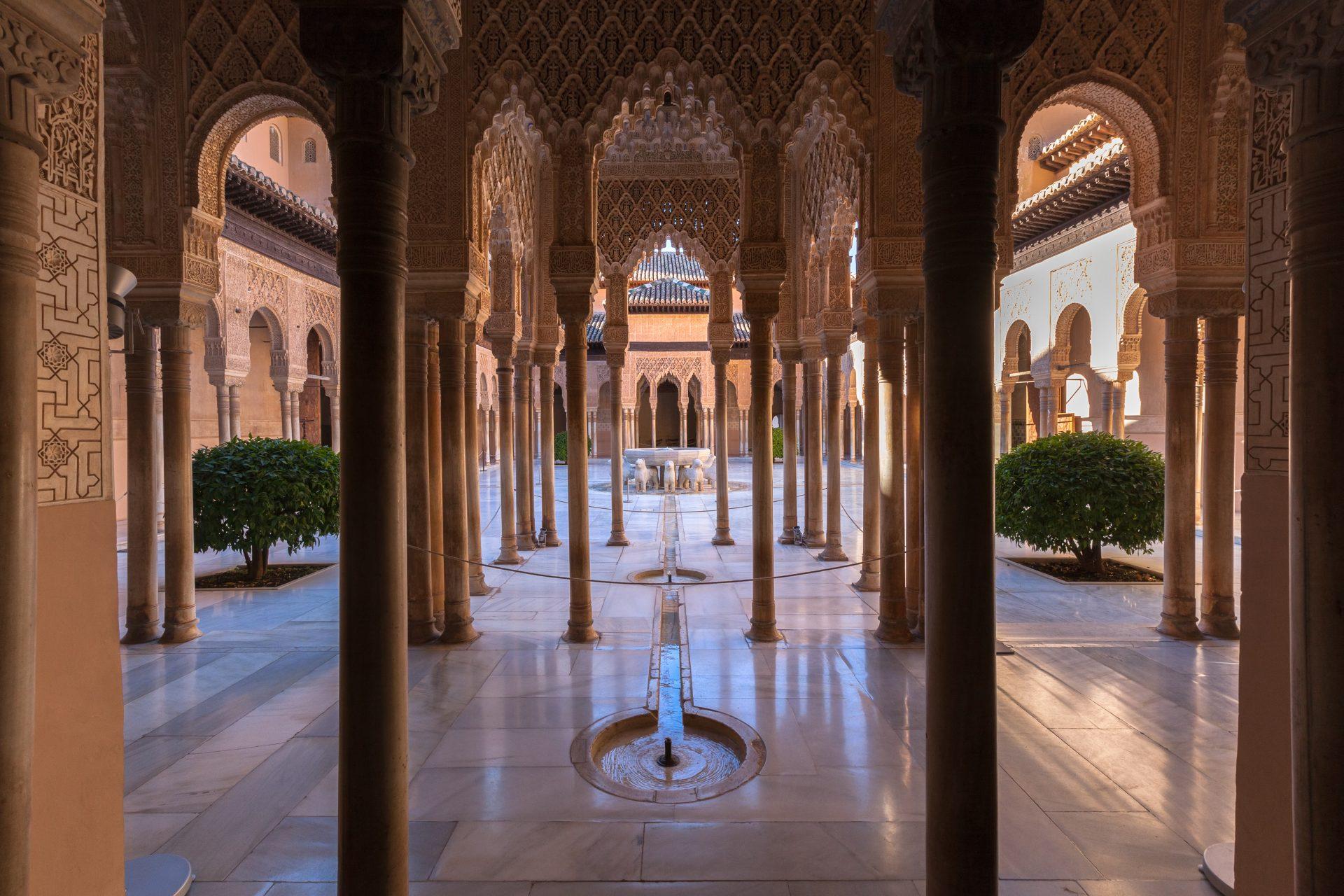
Xecutives.net: In 711 the Arabs crossed the Mediterranean from North Africa to present-day Spain, led by Tāriq ibn Ziyād, a Muslim commander. What was the reason for the Berbers and the Arabs to move to the Iberian Peninsula and what did they find then in the area of present-day Spain? We know that Spain was then ruled by the Visigoths. What do we know about the Visigothic people and about the encounter with the Arabs?
Javier Albarrán: Indeed, numerous archaeological and written sources indicate that in the year 711 an Islamic army, Arab-Berber, began to conquer the Iberian Peninsula, what was known as Hispania and would become known as Al-Andalus. The reason for this conquest is the same as the reason why those same Islamic armies conquered Persia or the Transoxiana: the expansive impulse of a socio-political and religious movement that had been transformed into an empire. Islam was probably born as an ecumenical monotheistic movement – extra-Islamic sources tell us, for example, that there were Jews in the first Muslim armies – with certain eschatological, apocalyptic doses, which expanded by force of arms and negotiation through the territory until then governed by two exhausted and decadent powers, the Byzantine and Sassanid empires. This new movement began to forge a fully independent religious identity, probably in the last third of the 7th century, when it also began to forge an imperial identity and organization, taking advantage of the structures of the empires it had conquered. And it is already with this new Islamic and imperial identity, and its strength and expansive desire, that the Iberian Peninsula was conquered. We know that the conquest was organized from North Africa, but it was controlled at all times – in the way that was possible in the 8th century – from Damascus, the capital of the caliphate. That is, it was an imperial conquest within the dynamics of expansion of an empire, exactly as were the conquests of Rome. Once in the Iberian Peninsula, the Muslims found themselves with an exhausted Visigothic kingdom, with many internal problems between the centre and the periphery, between the power of the king and that of the aristocracy, and also with important dynastic problems. The Visigothic world was much more rural than urban, but it was a society that had also reached a certain cultural development, as shown by the figure of Isidoro de Sevilla, or some of the archaeological remains that we have preserved. It was also a fully Christianized kingdom from all perspectives, including that of political organization, where its mirror was the great Roman Empire of the East. And it was a kingdom where the Gothic ruling elite was already fully integrated into the Hispano-Roman society, the majority of the population. But, as I say, at the beginning of the 8th century it was a kingdom in decline, a political formation with many internal problems.
Xecutives.net: Nobody could foresee at that time what the expansion of the Arab empire through the Mediterranean would influence in all Europe. Islamic rule lasted in southern Spain until 1492, when the last Muslim king, Boabdil, had to leave the kingdom of Granada. These approximately 800 years had a great influence on the whole of Europe, and of course an enormous influence on Spain, even today, as we shall see. But how was it possible for the Muslims to conquer the whole of the Iberian Peninsula by reaching the south of France in such a short time?
Javier Albarrán: There are two keys: the decadent situation of the Visigothic kingdom and the strength and expansive structures of the Islamic empire. It seems that the Visigoths gambled the future of their kingdom on a single card, the pitched battle known as de Guadalete, something that was not very advisable in the medieval world. If a pitched battle went wrong, you most likely left your enemy free to penetrate your territory. But once you have penetrated the territory, the most difficult thing is to conquer the different cities and, above all, to maintain those conquests. And that is where the expansive structure of the Umayyad caliphate comes into play. In the first place, being an imperial army, it was perfectly equipped and financed. The archaeological remains have allowed us to know that payments to soldiers came regularly in the common currency of the caliphate, exactly as was happening with the expansion in the east. The army was also financed with a perfectly structured booty in its distribution. All this meant that the army did not run out and could continue to move forward. On the other hand, and as had been demonstrated in the East, the Islamic empire was perfectly adapted to the territory it conquered and the societies it found there. In other words, the policy of pacts with the defeated played a very important role. The Caliphate was able to integrate part of the Visigothic elites into its structures, and it was also able to offer favourable living conditions to the Hispano-Roman and Christian populations, allowing them to preserve their religion and their goods, thus making them dhimmies, „protected“. We know this peaceful reality well through written sources, but also through archaeological ones, having found seals with which these pacts were confirmed. In a fragmented society in crisis like the Visigothic one, this possibility of agreement offered by the Muslims was crucial to facilitate the conquest. In the East, for example, several minority Christian communities preferred to make a pact with the Muslims rather than continue to live under the Byzantine yoke and the imposition of their „orthodoxy“.
Xecutives.net: Arianism is a non-Trinitarian Christian belief. It affirms that Jesus Christ was created by God the Father and is subordinate to him.
Do you think that the fact that Arianism had triumphed in the Iberian Peninsula facilitated the conversion of the Visigothic people to Islam and this favoured the Islamic conquest?
Javier Albarrán: This is a theory that circulates in certain environments and is very much linked to the currents that deny the Islamic conquest of the Iberian Peninsula, but it is totally false. It is curious to see how this theory, studied in depth by Alejandro García Sanjuán, which emerged in ultra-right-wing and racist environments that claimed to attribute the Andalusian culture to the Spanish „genius“, is now being proclaimed by sectors close to progressive Andalusian regionalism. But, as I say, it is false. In the first place, because Arianism did not triumph in Hispania. Arianism arrived with the Gothic elite, but never went beyond them. The vast majority of the population, and we are talking about almost all of them, were Trinitarians, and Trinitarians remained. And the Gothic elite abandoned Arianism at the end of the 6th century, over a hundred years before the Islamic conquest. No source we have to document the Visigothic kingdom in the 7th century talks about Arianism. It had simply disappeared with the conversion of the Gothic elite. Secondly, the Gothic and Hispano-Roman people did not convert to Islam with the conquest, so Arianism, if it existed, could never have facilitated this conversion. It is likely that there were some conversions, perhaps more of a political nature, but the process of Islamisation was slow. Although it is a matter of debate among specialists, it is likely that until the tenth century, the period of the Umayyad Caliphate of Cordoba, Islam was not the majority religion in Al-Andalus. This does not mean that Al-Andalus was not an Islamised region in its structures and social model, which it certainly was, or at least was on the way to becoming. This is something that can be clearly seen in the urbanization or in the existence of a taxing society. On the other hand, the process of Arabization was more rapid, and even by the ninth century the Christian populations of Al-Andalus, especially in the cities, had adopted Arabic as their main language.
Xecutives.net: What happened to the Visigoths after that? I think many Spaniards today are unaware that they not only have Phoenician roots, but also Roman and Visigothic ones. What has survived of the Visigothic people in Spain to this day?
Javier Albarrán: Of the Visigothic people, beyond the archaeological remains and what we know of their history, and the role played by the Visigothic kingdom in those who defend the nationalist idea of an „eternal Spain“, little remains. The Spaniards of today have nothing to do with the Visigoths, just as they have nothing to do with the Andalusians. Moreover, the Visigoth identity was very much diluted in the Spanish-Roman majority. On the other hand, as to what happened to the Visigoths and Hispano-Romans after the Islamic conquest, naturally most of the population continued with their lives without much change in the short term, beyond the fact that they now had a new ruler. As for the elites, some probably migrated to unconquered areas, but we know that others were perfectly integrated into the new Andalusian structures. Although it is difficult to trace their history, we have paradigmatic cases, such as that of the Banu Qasi, supposedly descendants of Count Casio who governed the Ebro Valley for Córdoba for decades, or Ibn al-Qutiyya, a member of a family descended from the Visigoth king Witiza and a chronicler at the court of the Caliph of Córdoba, Abd ar-Rahman III. We also know of cases of mixed marriages between Visigothic and Hispano-Roman conquerors and aristocrats. Interestingly, after the disappearance of Al-Andalus with the end of Granada, some members of the Nasrid aristocracy resorted to false genealogies that linked them to those Goths that would have been integrated into the Andalusian structures, in order to demonstrate that their origin was in fact Christian and thus be part of the lineages of power of the Hispanic monarchy of the sixteenth century.
Xecutives.net: A specialist on the history of the Iberian Peninsula in the Islamic period, Dr. Arnold Hottinger, commented in a very intense conversation in Madrid that the Muslims were well organized, and were technically and culturally more developed than the European Christian kingdoms. It seems that they sent groups of explorers at a very early stage to the territory of what is now Switzerland, which would explain some of the names of mountains, places and landscapes that still sound Arabic today. What did the Muslims know about Europe? Did relations between the kingdoms of Europeans and the Islamic empire already exist at that time?
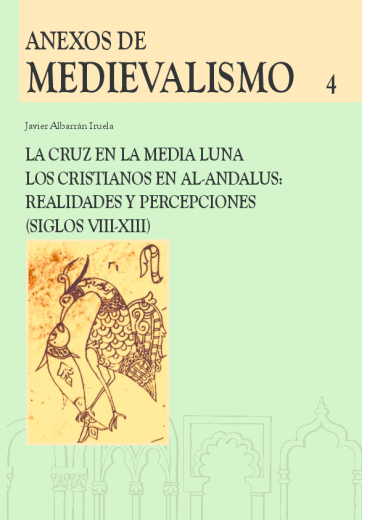
Javier Albarrán: At the time of the conquest, Muslims knew little or nothing about Europe, and it was only then that they began to acquire knowledge about it. We know of the brief diplomatic relations between Charlemagne and Baghdad, which led to the dispatch of an elephant from the Abbasid court to Aachen, as well as the information provided by some Arab geographers such as Ibn Rusta or Ibn Hawqal, or travellers such as Ibn Fadlan, the latter from Eastern Europe. Likewise, early Islamic settlements in places like Fraxinetum, near present-day Saint-Tropez, or in Piedmont and northern Italy, facilitated contacts and the transmission of information. However, it was not until the period of the Crusades, from the 12th century onwards, that a boom in information about Europe in the Islamic world took place, with very detailed information not only on a geographical and political level, but also, for example, on a socio-political organisation level. For example, the information about the pontiff and the role he plays in Christianity, equating him in some way with the caliph, which appears at this time in Arab texts, is very interesting. Europeans“ in general will be known as „ifranj„, a term derived from „frank“, although the Arab-Islamic authors were well aware that, within this generalisation, there were distinct places like England or Germany.
Bearing all this in mind, we should not forget that Arab geographical knowledge during almost the entire medieval period was greatly influenced by a Ptolemaic conception of the world, which was thus divided into climates that in turn influenced the behaviour of the people who lived in each territory. Thus, the regions of the Islamic world were the most favourable, according to this conception of the world, for the development of civilization, while the European regions were more prone to „barbaric“ behaviour.
On the other hand, the survival of certain traditions of Islamic origin in some places in Europe tells us that the primitive contacts must have been more intense, at least on a cultural level, than we initially thought. That is to say, those Islamic settlements on „European soil“ were not mere commercial enclaves or places for piracy and obtaining booty, but also transmitters of culture. An example is the dance of the Spadonari or „Bal de Sabre“ in some villages in Piedmont, or the Arab-Islamic architectural influences in the Romanesque of the French Pyrenees, Provence or, once again, Piedmont.
Xecutives.net: The battle of Tours Poitiers against Charles Martell, Charlemagne’s uncle, marked a turning point, a controversial thesis. The Muslim and Arab expansion came to an end. From this point onwards, there is talk of the Reconquest, which can be considered to have ended in 1492 with the victory of the Catholic Kings, Isabel and Ferdinand, over the last Muslim king of Granada, Boabdil. What do you think the Arabs were thinking when they expanded so far north? What do we know about their plans and intentions at that time? And why weren’t they more successful, and why did they continue to advance into northern Europe?
Javier Albarrán: The Islamic expansion beyond the Pyrenees was not something special, and probably not something planned per se. It was, no more and no less, the logical continuation of that expansive impulse of the Islamic empire, an impulse that widened the territory of the caliphate from east to west. And it is precisely the exhaustion of that impulse, and the internal crisis of the Umayyad Caliphate, that prevented the success of those conquests. The so-called Battle of Poitiers took place in 732, a time when the Umayyad Caliphate of Damascus had already been in a crisis for several years, which would lead to the end of this political formation in the so-called revolution of 750. One of these was the disaffection of the Muslim, but not the Arab, population of the caliphate, which had become the majority with the conquests and felt that they did not participate enough in the distribution of power. That is why there were different revolts of a „nativist“ nature in different parts of the Islamic empire, including the Iberian peninsula with the so-called Berber revolt of 740. It is in this context of increasing crisis that expansion beyond the Pyrenees took place, and it is therefore normal that, with the structure of imperial expansion becoming less and less operational, these undertakings were not successful. However, we should not forget that the Muslims controlled Narbonne until 759, and that more and more archaeological remains –for example, necropolises – of this Islamic presence are being found in Septimania.
Xecutives.net: In certain areas of Spain, Muslims stayed for a long time, for example in Seville, Toledo, Malaga and Granada. Today, even people who are not interested in history cannot ignore this. There is a beautiful mosque-cathedral in Cordoba, the minaret of the cathedral of Seville, and in Granada, the Alhambra, the most visited monument in Spain, among numerous buildings. How can one imagine the Reconquest? What united the Christians with the Muslims and what divided them?
Javier Albarrán: It’s hard to imagine the Reconquest because it didn’t exist. It didn’t exist as a homogeneous expansion process of 800 years in which the Christian kingdoms of the north conquered Al-Andalus. A process as such is, from the historical point of view, unsustainable. This perspective on the history of Spain, as well as the systematic use of the term „reconquest“, emerged in the 19th century in the context of the creation of a historical narrative and founding myths for the Spanish „nation-state“ that was to be created. In the Middle Ages, the Andalusian socio-political formations were one more actor within the power relations that were established in the Iberian Peninsula. Al-Andalus fought, made agreements and lived together with the different Christian kingdoms, just as Castile fought, made agreements and lived together with Aragon, to give an example. Or, for example, the different kingdoms of Taifas among themselves. It is impossible to argue historically that there was a conflict that lasted 800 years, among other things because of something very obvious: the actors present in the 8th century were very different from those present in the 15th century. The only way to fully understand the complexity of medieval Iberia is to stop looking at it through the prism of permanent conflict between Muslims and Christians. This is the view of someone who has dedicated a good part of his academic life to the study of the ideology of war and jihad. There was conflict and there was war, but the exchange was much more common in all senses. This reality, which at times may seem contradictory to us, is exemplified very well by the case of Jiménez de Rada, studied in detail by Carlos de Ayala. Jimenez de Rada, Archbishop of Toledo, was one of the greatest promoters of the crusade that ended in the battle of Las Navas de Tolosa in 1212. He was also deeply interested in the thought and theology of the Almohads, and he had several works by Ibn Tumart, the founder of this movement, translated, probably with the aim of using them in the debates about the conception of God that he was having with his Christian co-religionists. And examples of cultural exchanges such as this can be found in any area and period of the medieval Iberian peninsula. The so-called „Mudejarism“ is another good example of this.
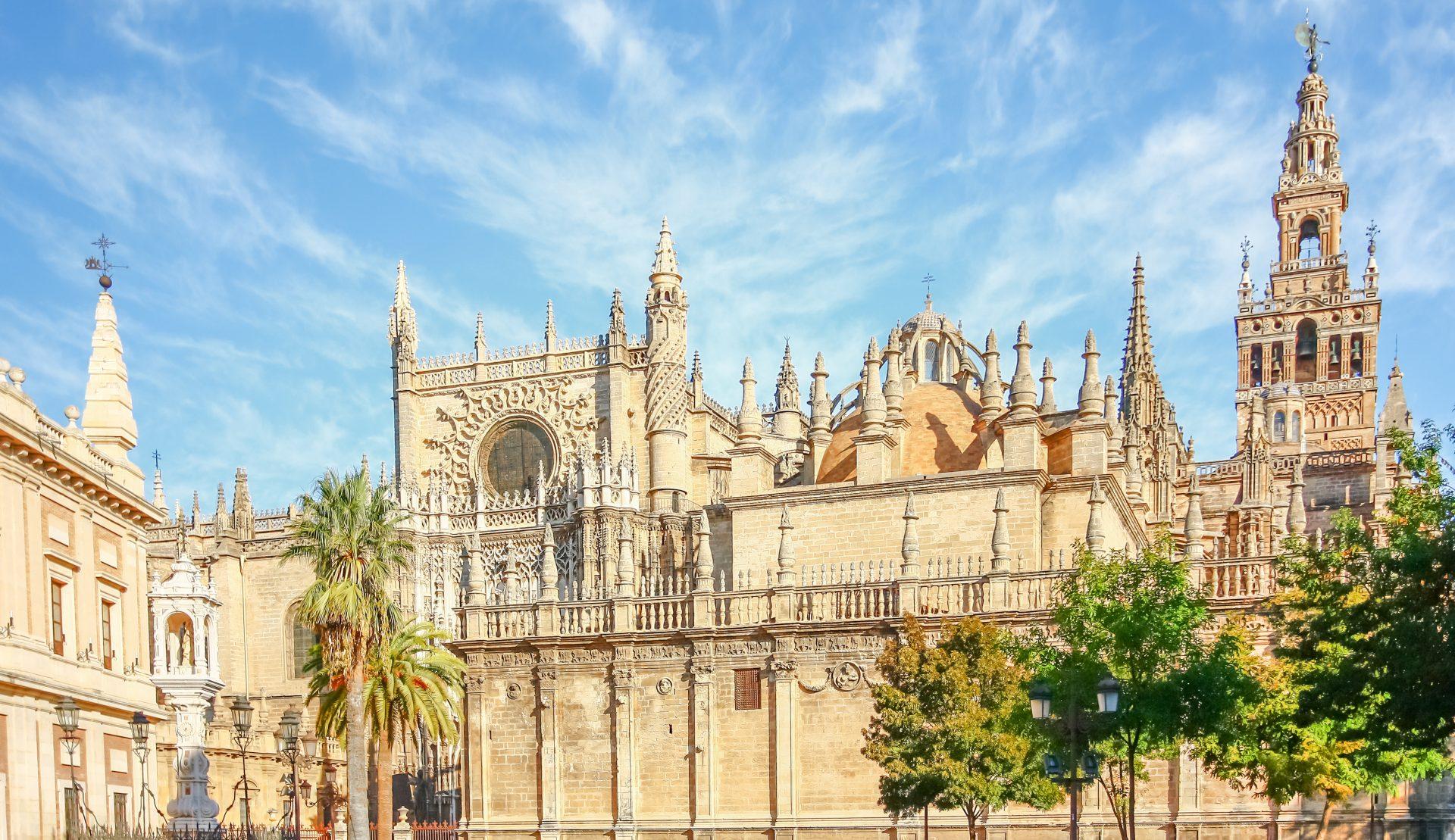
What united and divided Christians and Muslims? I think an anecdote from the 13th century can help answer this question. At the end of the 13th century King Alfonso X faced the rebellion of his son Sancho. Faced with this challenge, he asked the Sultan of Fez for help. The latter accepted to help him and, to justify himself, argued that, despite the religious difference, the rebellion of a son against his father is never acceptable in any society. In other words, above all religions, mutual understanding and shared interests always prevailed.
On the other hand, and totally compatible with the aforementioned above, what did exist in the peninsular medieval kingdoms, probably since the ninth century – with the so-called Alfonso III chronological cycle and with full maturity since the eleventh and twelfth centuries – is an ideology that we can call „reconquest“. A „reconquering“ logic. In other words, a discourse forged in the courts of the Christian kingdoms that, in broad terms, and with certain differences between the different kingdoms, affirmed that these were the descendants of the Visigoths and that they were therefore entitled to recover the territory that, because of their sins, God had made them lose. This ideology served to legitimize the territorial expansion of those Christian kingdoms and, above all, to increase the power of the monarch. And that is what it was all about, an ideology of justification of power, and not some 800-year process of expansion.
Xecutives.net: The Arabs and Muslims themselves were also very divided among themselves. Then came the Caliphate of Cordoba, which still echoes today. This caliphate was very controversial in Arab society, even then, and this also led to warlike conflicts among the Arabs themselves. What did this caliphate mean for Spain at that time? What was the relationship with the rest of the Muslims and the Arabs in Spain and in their kingdoms of origin such as Iraq and Persia?
Javier Albarrán: The Caliphate of Cordoba was the most important political formation in the western Mediterranean in the 10th century. And Cordoba, its capital, was one of the most important cities in the world at that time. It was a cultural, economic, political, demographic and artistic centre of the first order. Embassies of the most diverse political entities of the time, such as the Otonides or the Byzantines, moved there. Within the Iberian Peninsula, it was the most important state, a state that used to impose its authority and interests on the Christian kingdoms of the north. We know that, except for certain specific moments, these kingdoms were tributaries of Cordoba. It was also the state that marked many of the cultural patterns. It was also, to a certain extent, a fairly centralized state. From Cordoba, taxes were collected, mosques or bridges were built throughout Andalusia, governors were appointed in the different regions, and armies were sent to solve various problems. And, like all centralized formation, during certain moments it had power conflicts with its peripheral regions that were looking for more autonomy.
Likewise, the memory of the Umayyad Caliphate of Cordoba always influenced the Andalusians of later times. This idea is well illustrated by the fact that the Almohad Caliph Al-Mansur stopped to meditate on past glories and the future of history before the ruins of Medina Azahara, the palatial city built by the Caliph of Cordoba Abd ar-Rahman III. And this „positive“ memory has also reached our days. The Caliphate of Cordoba in particular, and Al-Andalus in general, are memories claimed in Islamic societies as moments when a Muslim political entity reached very high levels of power and culture.
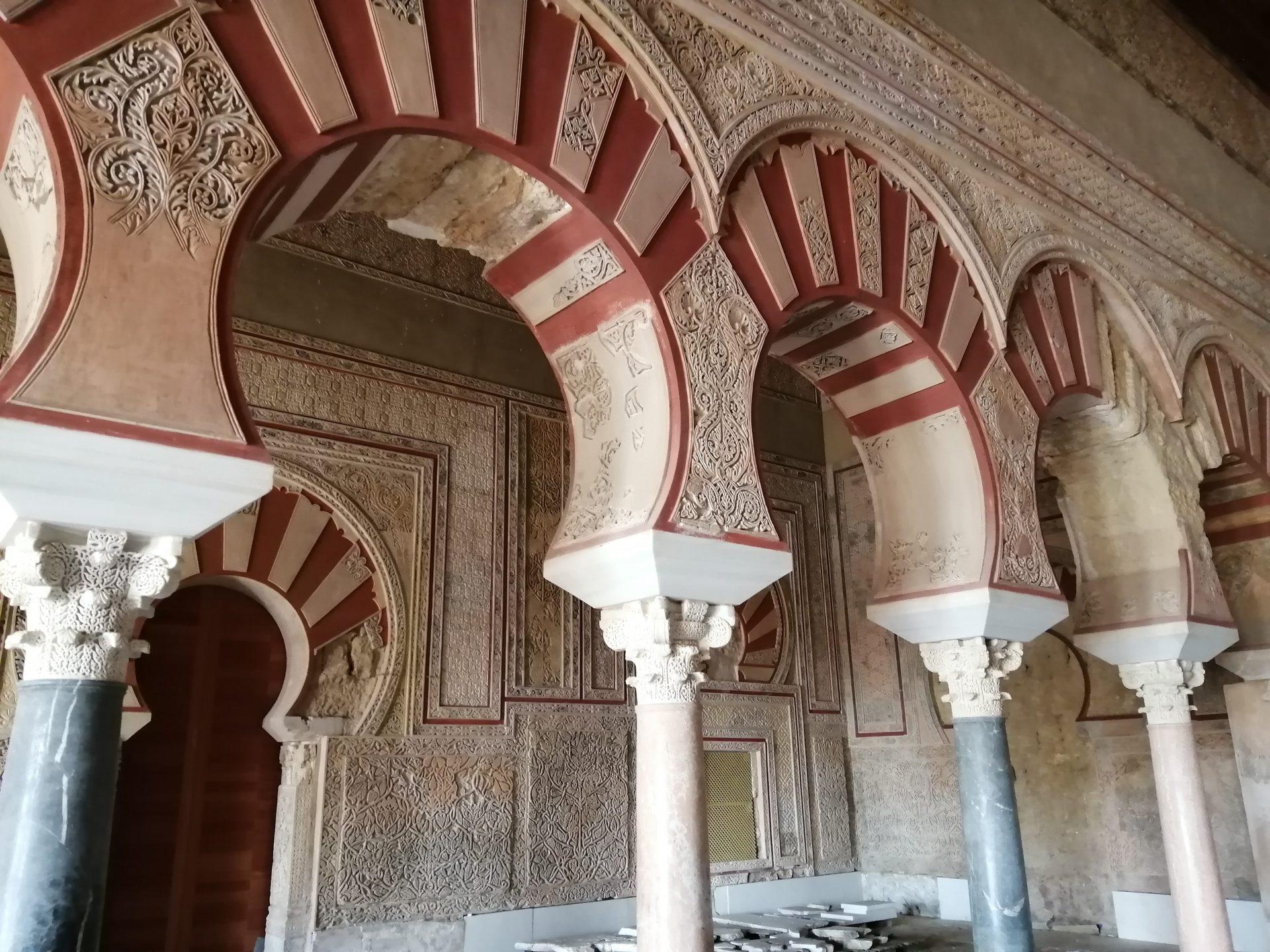
On the other hand, the caliphate maintained a conflict that was mainly dialectic, but also materialized in various confrontations in North Africa, mainly through mutual allies, with another caliphate, the Fatimid, of Shiite tradition. As political formations of a universalist character, the caliphates claimed their authority over the entire Islamic community, and thus entered into a conflict that often went no further than mere discourse. The same thing happened between the Umayyad Caliphate of Cordoba and the Abbasid of Baghdad. The Andalusian sovereigns never ceased to claim the Islamic East as the heirs of the Umayyad Caliphate of Damascus. But, at the same time, Al-Andalus was part of that Islamic world in every way. Eastern „fashion“ came to the Iberian Peninsula especially from the 9th century onwards, and Andalusian intellectuals travelled to the heart of the Islamic world, on a kind of study trip, bringing back with them a wealth of knowledge. We cannot understand Al-Andalus as something separate from the rest of the Islamic world. It was part of the same cultural unit. For example, the literary anecdotes that were known in Baghdad were also known in Cordoba.
Xecutives.net: In this Islamic period of the Iberian Peninsula, the Jews, the Sephardic Jews, had a special role. We know that even then the Sephardic people were persecuted and intimidated by both sides, Muslims and Christians. But what role did the Jews play at that time?
Javier Albarrán: The Jews played an important cultural role in the Al-Andalus of the 10th-12th centuries, fully participating in the literary, philosophical, artistic, medical, etc., traditions. For example, even if they had to go into exile because of Almohad policies of forced conversion, one cannot understand Maimonides‘ philosophy without understanding Almohad thought. As Sarah Stroumsa has well demonstrated, Maimonides was an Almohad thinker. Jews also played an important role as cultural and political mediators between Al-Andalus and the Christian kingdoms, as was the case with Hasday ibn Shaprut in the 10th century. And the Jews, fully integrated into the Islamic social order, also obtained important doses of power. For example, in the 11th century, in the Zirid Taifa kingdom of Granada, Semuel ibn Nagrella was appointed vizier. Unfortunately, the experience ended with the Granada pogrom in 1066, where the Jews served as scapegoats for the evils that stalked Al-Andalus.
However, we must also bear in mind that the role of the Jews in Al-Andalus has sometimes been magnified through the idea of the „Jewish golden age“ in the Iberian Peninsula, an idea created especially in the 19th century when, concerned about their future, Jewish communities, mainly in Central and Eastern Europe, were looking for historical examples where Jewish minorities had been fully integrated into the dominant society without having completely lost their identity.
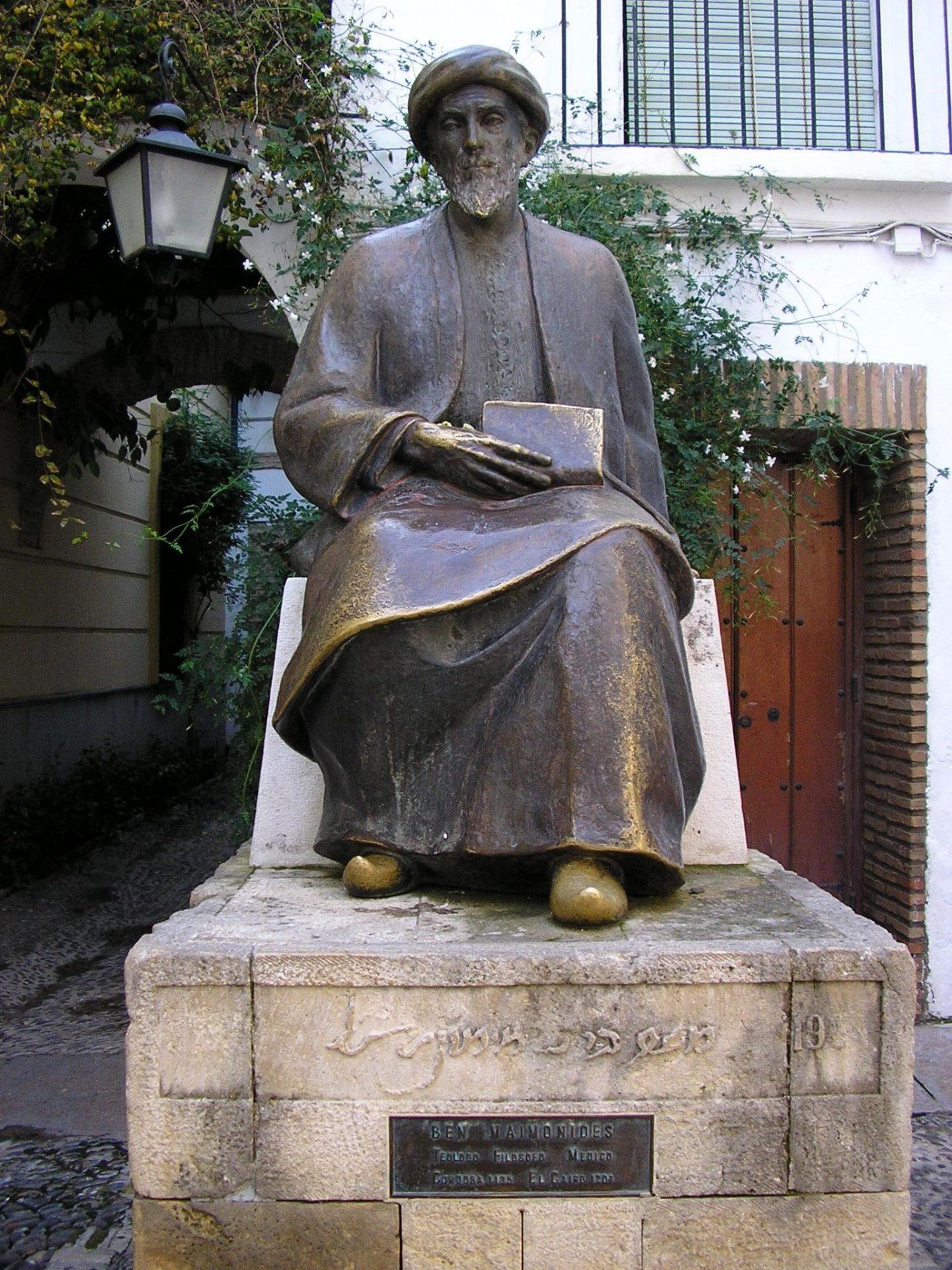
Xecutives.net: What happened to the Sephardim later?
Javier Albarrán: Andalusian Jewish communities began to decline in the late 12th and early 13th centuries, when it seems that the Almohads carried out a policy of forced conversion to Islam, one of the few cases in Islamic history. However, shortly afterwards they flourished again, especially in the Maghreb. It is from that moment onwards that the first experiences of the creation of fully Jewish quarters, the so-called mellah, began to emerge in what is now Morocco. Until then, it is most likely that there was no religious separation in the cities. These Sephardic Maghrebi communities continued to be active and integrated, with certain limits, into Islamic society, until well into the 20th century, when with the creation of the state of Israel, tensions increased and the majority of Jews emigrated to the new country.
Xecutives.net: The role of Christians is not very glorious when it comes to the Inquisition, which had its origins in Seville. There are many horrible stories about the machinations of this Catholic institution. The Inquisition had a great influence on all religious communities. There was betrayal, mutual accusations. Apparently, to show their distance from the Muslims in public, the Catholics walked the streets eating lard. What role did the Inquisition play and where can its echoes be heard today?
Javier Albarrán: The Inquisition played an important role in the persecution of Muslims who converted to Catholicism, either voluntarily or by force, from the 16th century onwards. This process has to do with the creation of modern states and their tendency to religious homogenization. These converts, known as Moriscos, were systematically and generally treated with the suspicion of practising a clandestine Islam – many would do so, but many others did not – and they saw how, gradually, their cultural tradition was forbidden, such as the use of Arabic. Finally, and after leaving the path of integration, they were expelled from the Iberian Peninsula from 1609. For these populations this end was traumatic, a matter that can be seen in the literature that we have preserved about them. They had to leave their land and goods and head for places where they would often not be welcome either. For example, when they arrived in Islamic territories, such as North Africa, they were treated as something alien, vilified for having allowed their conversion to Christianity.
Xecutives.net: Muslims and Arabs sometimes had very intense contacts with the rest of Europe. Apparently Charlemagne was very interested in cultural exchange. We know many stories about medicine, but also about biology, geography, mathematics and astronomy. The Arabs were centuries ahead of European cultures. What knowledge did people want from the Arabs at that time and what were the Arabs themselves interested in?
Javier Albarrán: The Muslims recovered and developed in a profound way the knowledge and the Greek-Roman science. They were interested in a wide range of knowledge, from Aristotelian or Neoplatonic philosophy, to use it in their own theological debates, to applied sciences such as the botany of Dioscorides, very useful in curing many ailments. And this knowledge, in a journey often back and forth, was transmitted to the Christian world. In part, this is why it has been preserved. Without Averroes, the Aristotelian tradition would not be understood in the same way in Europe. Through the activity of translation initiated in the scriptorium of the cathedral of Toledo in the 12th century, where important Arabized communities lived, and later promoted by kings like Alfonso X, we know that many Arab works of astronomy, astrology, philosophy, theology, medicine, etc. were translated into Romance and Latin.
Xecutives.net: The traces of the Arabs in the Iberian Peninsula are still visible today, but many people seem to be unaware of the importance of the heritage left to us by the Arabs. It is estimated that around 1500 words are of Arab origin. Beautiful examples of this are the words sugar, rice and algebra. But even surgical instruments still have Arabic names or are derived from Arabic names. Where do you see the greatest influence on our culture today? Where do you see most clearly today that we are influenced by the Arabs?
Javier Albarrán: Evidently, vocabulary is one of the fields where you can see more influences. For example, the scientific-technical lexicon, due to that translation activity we mentioned before, is full of arabisms. But also „everyday“ Spanish. Architecture and art have also received important influences, with movements such as neo-Mudejar, or literature. We also find important influences in Spanish gastronomy, which even moved to America. However, on many occasions these issues have been magnified. We must not forget that Al-Andalus, like any medieval society, was a world totally distant and alien, in all aspects, from us. We are not heirs to the medieval Arab-Islamic world, any more than we are to the Visigoths or the kingdom of Castile. What we can find are some traces of these past experiences.
Xecutives.net: Professor Ulrike Babusiaux spoke in an interview about the echoes of Roman law in current European laws and regulations. Our entire legal system, including Switzerland and Spain, is full of Roman legal principles. I would be surprised if there were also traces of the Arabs when it comes to the law. A specialist in Seville said some time ago that the Arabs had not studied the law in depth. There is only one known regulation at a town-planning level concerning the courtyards of houses, which were apparently obligatory when one was built, and which has left its mark on the typical courtyards of Andalusia.
Javier Albarrán: Islamic law is very rich and complex, and also very flexible, much more than you might imagine. Muslim jurists had a lot of flexibility and independence of thought and criteria in the creation of jurisprudence and in the application of the rules. And this is even more evident in the first centuries after the emergence of Islam, centuries in which that law is in its formative stage. Obviously, Islamic law did not come from the Koran, but took centuries to consolidate. And it adopted many features of the societies through which Islam spread, including places where Roman law was applied. In that sense, part of the Islamic law is also heir to the Roman law, and no doubt that is a wealth of mutual influences with the European world. But obviously important differences were generated, such as the greater importance of oral testimony in the Islamic world, or the prominence of jurisprudence over the codification of laws. Nevertheless, we can find some influences in matters of law, at least in the Spanish case. One example is the figure of the „executor“, the person in charge of fulfilling the last will of a testator and guarding his or her assets.
Xecutives.net: The Spanish inherited a lot from the Roman culture, including the culture of meeting in public places and bars to talk and exchange ideas. The Romans had an impact not only in terms of law, but also in architecture, agriculture, wine and food in general. We should remember garlic bread, as it is made in Seville today, by rubbing a clove of garlic on toast mixed with olive oil. What do you think are the remains and echoes of the Arabs in Spain today?
Javier Albarrán: First of all, there is an obvious echo in the Spanish geography. The existence of cities like Almería, Granada, or the capital itself, Madrid, would not be understood without Al-Andalus. This geographical imprint is also evident through the innumerable material remains that the Andalusian world has bequeathed to us, from „simple“ ceramic remains to the monumental Alhambra or the mosque of Cordoba – two buildings that continue to mark, to this day, the identity of the people of Cordoba and Granada. We can also observe this topographical echo, for example, in the continuity of the Valencian or Murcian orchards with their networks of ditches, an economic activity that, although it has been mutating over the centuries, is still active and owes much to the Andalusian world. Likewise, certain Andalusian cultural traditions had continuity in Spain for a long time, such as the game of canes, a game of warlike simulation that today is kept alive, in a way, by the Argentine gauchos. Other typically Spanish cultural traditions would not be understood without the existence of Al-Andalus, such as the „Moors and Christians“ festivities, or the development of „monta a la gineta“. On the other hand, we have already talked about the important mark that the Arabic language has left on the Spanish language and the echoes of the Andalusian gastronomy in the Spanish one, with examples like the meatballs or the marinade.
However, I believe that the most important thing is that the existence of the Andalusian past has influenced the very conception that was created of Spain and its history, both inside and outside Spanish borders. As I have already mentioned, the Spanish national idea was created in the 19th century in contrast to Al-Andalus. That is to say, according to that nineteenth-century nationalist discourse, the Spanish nation had been formed by fighting against Islam, by reconquering a demonized Al-Andalus. And this discourse was very valid and influential in Spanish thought and Spanish idiosyncratic way of behaving until very recently, surviving even today in conservative circles. Likewise, the existence of the Andalusian past, in this case idealized, has contributed to create in certain contexts the idea that in Spain we have had a successful multicultural and tolerant experience that should serve as an example. In other words, in this line of thought, which is deeply rooted in certain sectors, albeit minorities, of Spanish society, we should recover this „lost paradise“.
On the other hand, the Andalusian past was one of the factors – but not the only one – that contributed to creating an „Orientalist“ image of Spain in the rest of the Western world, giving rise to cultural products such as Washington Irving’s „Tales of the Alhambra“. Likewise, the Andalusian past was also used in critical discourses of Spain by other European countries: the Spanish intolerants, with the Inquisition at their head, would have ended up with the cosmopolitan Andalusian culture.
I believe that this disputed memory of Al-Andalus, which can be traced through various and diverse discourses and imaginings, is the most important „Arab“ imprint that remains active in Spain today.
Xecutives.net: The Western world is going through a difficult time with the Muslim world today. This also applies in reverse. Our secular culture and our dealings with Christianity are connected with many ups and downs and we have experienced a time of enlightenment. What do you think of this relationship between Christians and Muslims when you look at it as a historian and with your knowledge of Spain and its past? Could Al-Andalus play a key role in overcoming these conflicts? Could Spain, being the golden bridge to North Africa at this time, have a special position here?
Javier Albarrán: I really don’t think that there is a conflict between Christians and Muslims today, but I think that there are various conflicts of interest and power and those who are involved, both in the West and in the East, use that polarized rhetoric to legitimize themselves and to move the focus away from other problems. And, unfortunately, it works for them, because part of society is willing to hold on to these simplifying messages. On the other hand, in today’s fluid society, many people who feel isolated are looking for an identity that provides them with a refuge and a purpose in life. And many people are served by this hateful discourse between Christians and Muslims. And this polarization is not only experienced in the Western world, but also in the Arab-Islamic world. Egypt’s Christian communities have lived alongside Muslims for centuries, and never have they been so threatened and alienated as they are today by the use of such polarized rhetoric.
Can Al-Andalus help to overcome these problems, these hate speeches? I do not think that Al-Andalus, as a medieval society, is an example of anything in the 21st century. Our ways of life are diametrically opposed. And not because Al-Andalus was an Islamic society, but because it was a medieval society. Therefore, we cannot look for solutions of, for example, coexistence of cultures in Al-Andalus, because its way of coexistence, although it worked and it has allowed that in other parts of the Islamic world communities of non-Muslims have survived until today, would not pass today some minimum filters of human rights. Having said that, what Al-Andalus can do is to avoid and dismantle those essentialist discourses that describe Islamic societies as backward, barbaric and unchanging. Knowledge of the Andalusian past in particular shows us that Islamic societies, like any other society, are dynamic, adapt to change, are culturally and intellectually restless, are capable of creating successful social models that integrate minorities, etc. And, historical knowledge in general, shows us that the development or not of a region, the success or not of a political-social formation, depends on many contextual factors, and not on a presumed immutable essence that each culture would have. Among other things, because cultural traditions are in constant change and mobility, and this is an issue that can also be seen very well through Al-Andalus.
On the other hand, it is clear that the memory of Al-Andalus has played a very important role in Spain’s relationship with the Arab world and with North Africa. For example, the Spanish colonial experience in Morocco based its discourse on the „brotherhood“ between Spaniards and Moroccans due to the common Andalusian past. And, without a doubt, the Andalusian past has built many cultural bridges between Spain and many Arab countries, such as Egypt or Jordan, through cooperation projects. For example, if you visit the library of the Cervantes Institute in Amman, you will see that Al-Andalus has a leading role. Or, if you visit the Umayyad palace in the Jordanian capital, you will see how Spain has played an important role in its study and recovery. It is clear that this would not be the case without Andalusian memory. In the Arab world, as Pedro Martínez Montávez, among others, has studied well, the idealised memory of Al-Andalus is omnipresent, and this memory is already a bridge to Spain. A bridge that can be exploited in various ways, such as, for example, through the creation of structures for the development of Arab cultural tourism in Spain, an issue that would help to strengthen ties and exchanges between different cultures.
Finally, the memory of this partly idealized Al-Andalus has already been used by political projects that, with greater or lesser fortune, have tried to overcome the polarized Christian-Islamic rhetoric. I am speaking, for example, of the much-denounced „Alliance of Civilisations“, whose presentation to children’s audiences was a film set in early 11th century Cordoba that sought to highlight the model of Andalusian coexistence.
Xecutives.net: Mr. Albarrán, thank you very much for dedicating your time to us, thank you for granting us this interview, I wish you all the best for your studies about the Iberian Peninsula!
© 2020 by Christian Dueblin. Alle Rechte vorbehalten. Anderweitige Publikationen sind nur mit ausdrücklicher Genehmigung des Autors gestattet.
Weitere Interviews zu ähnlichen Themen:




